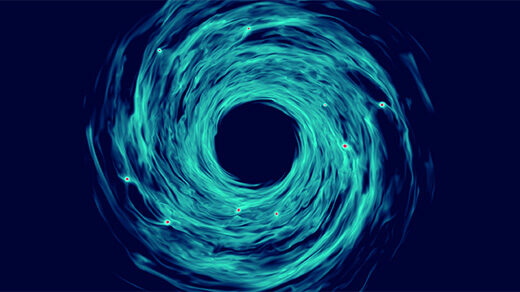In a groundbreaking discovery, astronomers have stumbled upon a hidden ingredient that plays a crucial role in the creation of planets: magnetic fields. This revelation has sent shockwaves through the scientific community, unraveling long-held beliefs and opening up new avenues for understanding our cosmic origins.
The Enigmatic Power of Magnetic Fields
For centuries, scientists have marveled at the enigmatic power of magnetic fields. These invisible forces shape our world on both macro and micro scales, from guiding compass needles to protecting us from harmful solar radiation. However, their influence on celestial bodies has remained largely unexplored until now.
Astronomers have long suspected that magnetic fields might play a role in planet formation, but concrete evidence had eluded them. That is until an international team of researchers made an astonishing breakthrough using state-of-the-art telescopes and advanced computer simulations.
By meticulously studying protoplanetary disks – swirling clouds of gas and dust surrounding young stars – scientists discovered telltale signs of magnetism at work. These powerful magnetic fields were found to be intricately intertwined with the material within these disks, shaping their structure and influencing how planets are born.
An Intricate Dance between Magnetism and Matter
The newfound connection between magnetism and planet formation reveals an intricate dance unfolding across vast cosmic distances. As matter collapses under its own gravity within protoplanetary disks, it forms dense clumps known as planetesimals – building blocks for future worlds.
Magnetic fields exert their influence by channeling this collapsing matter into specific regions within the disk. By doing so, they create zones where particles can efficiently stick together through electrostatic forces rather than being scattered apart by collisions alone.
This magnetic guidance system not only facilitates the growth of planetesimals but also determines their composition. Different regions within the disk possess varying levels of metallicity, influencing whether a planet will be rocky like Earth or gas-dominated like Jupiter.
Furthermore, these magnetic fields act as cosmic sculptors, shaping the final architecture of planetary systems. They can induce orbital migration – a phenomenon where planets move closer or farther from their parent star over time – leading to diverse arrangements and potentially habitable environments.
A Paradigm Shift in Planetary Science
The discovery of magnetic fields as a secret ingredient in planet formation marks a paradigm shift in our understanding of how worlds come into existence. It challenges conventional theories that solely rely on gravity and collisions to explain this intricate process.
With this newfound knowledge, astronomers are now equipped with powerful tools to explore other protoplanetary disks across the universe and decipher the role played by magnetism in shaping exoplanets. This breakthrough paves the way for future discoveries that could shed light on our own solar system’s origins and even uncover potential habitats for extraterrestrial life.
In Conclusion
The revelation that magnetic fields are an essential component in creating planets has ignited excitement among scientists worldwide. This groundbreaking finding not only deepens our understanding of celestial mechanics but also highlights the interconnectedness between fundamental forces at play throughout the cosmos. As we continue to unravel nature’s mysteries, one thing is certain: magnetism holds profound secrets waiting to be unlocked beyond our wildest imaginations.

